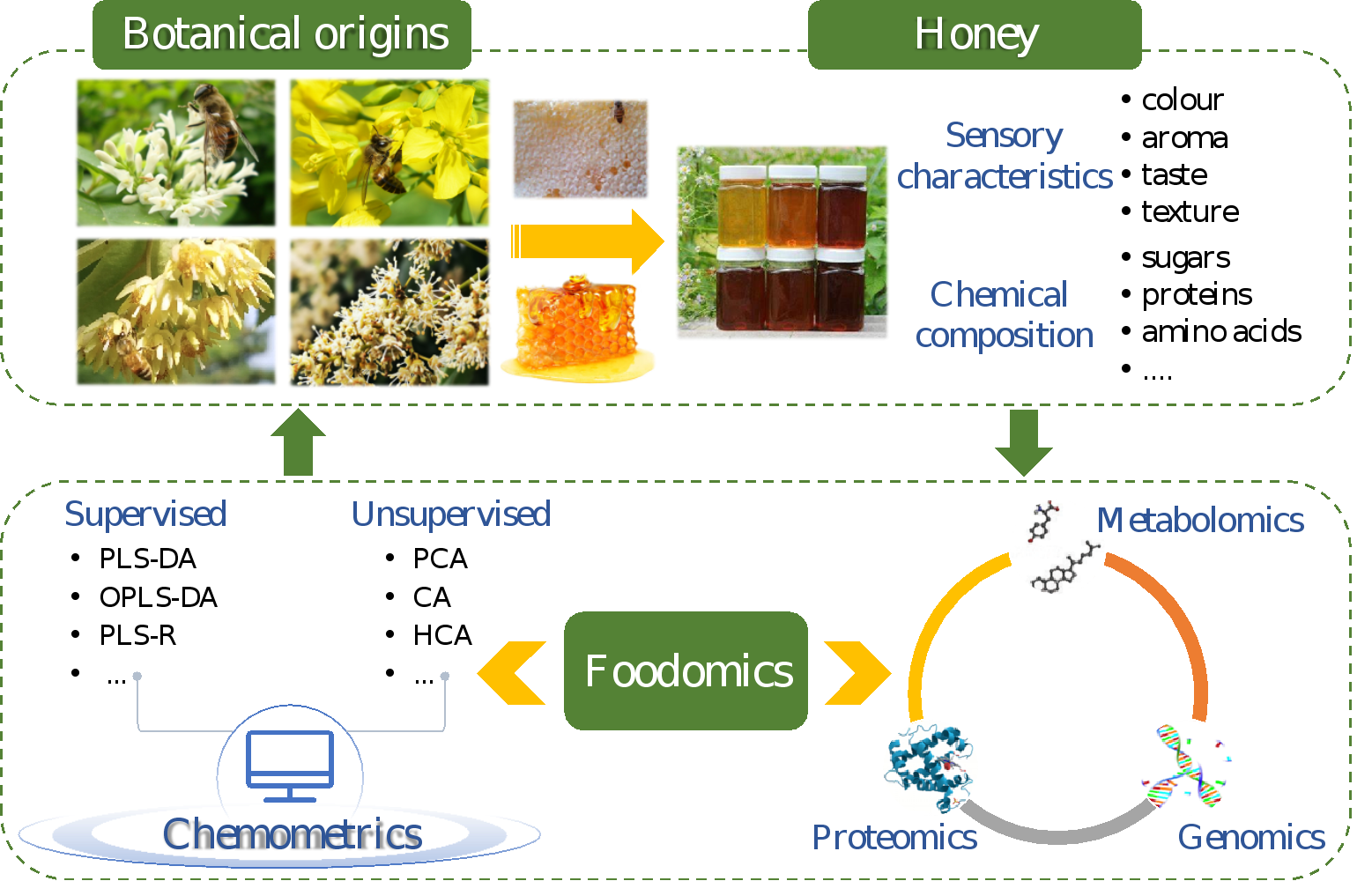Advancement of Foodomics Techniques for Honey Botanical Origins Authentication
Date:2024-04-16
Recently, the Resource Insect Products Processing and Functional Evaluation Innovation Team from the Institute of Apicultural Research, Chinese Academy of Agricultural Sciences (CAAS) systematically reviewed the research progress of foodomics in the identification of plant sources of honey in the last decade, and the prospective research areas are also proposed.The related findings have been published in Trends in Food Science & Technology.

Honey is a precious natural product with high nutritional and medicinal values. However, due to its complex composition and wide range of plant sources, authentication of honey varieties is extremely challenging, especially high-value monofloral honey is easily adulterated or false labeling, which has become a global challenge. Domestic and international researches have shown that honey is one of the most complex natural foods, containing more than 200 nutrients such as sugars, proteins, amino acids, lipids, vitamins, phenols, minerals, and organic acids, etc. The types and contents of these substances are closely related to the botanical sources of honey.
This study mainly discussed the influence of nectar-producing plants on the sensory characteristics and chemical composition of honey, as well as the research ideas, advantages and shortcomings of metabolomics, proteomics and genomics in the identification of honey from different plant sources. The results found thatmodern detection techniques such as chromatography-mass spectrometry and nuclear magnetic resonance spectroscopy combined with different chemometrics to excavate characteristic markers or establish identification models, are the main means of identifying the botanical origin of honey. In addition, the development trend of omics methods for identifying honey botanical origin was further explored, and it was suggested that a comprehensive analytical strategy of multiple omics techniques should be used to detect and analyse more differential components, thereby improving the accuracy of identification. It was emphasized that the future should focus on the metabolic pathways and changing patterns of metabolites in the whole process from nectar to honey ripening, so as to provide more comprehensive information for the future studieson botanical origin omics of honey.
This work was financially supported by the National Key Research and Development Program of China and the National Natural Science Foundation of China.
The DOI Link of the original text: https://doi.org/10.1016/j.tifs.2024.104458